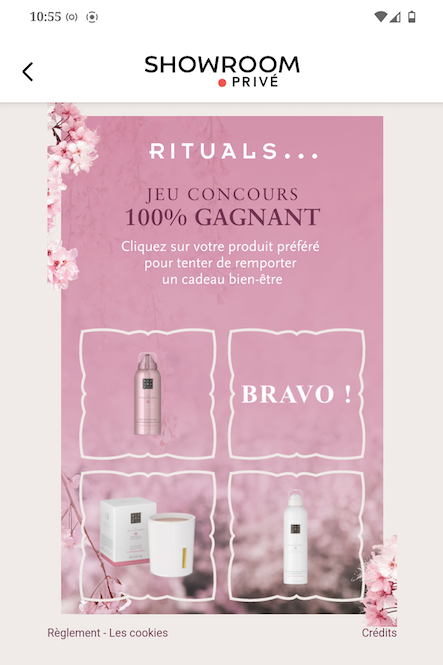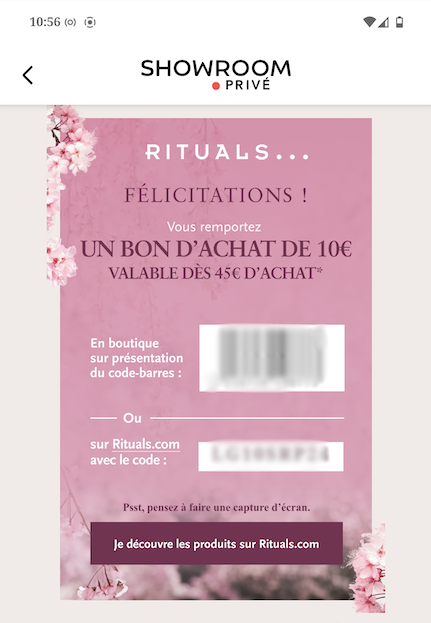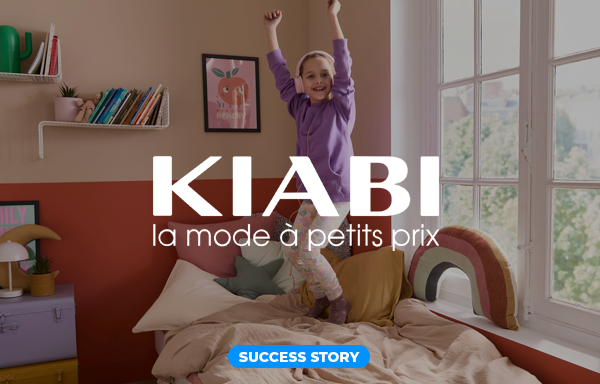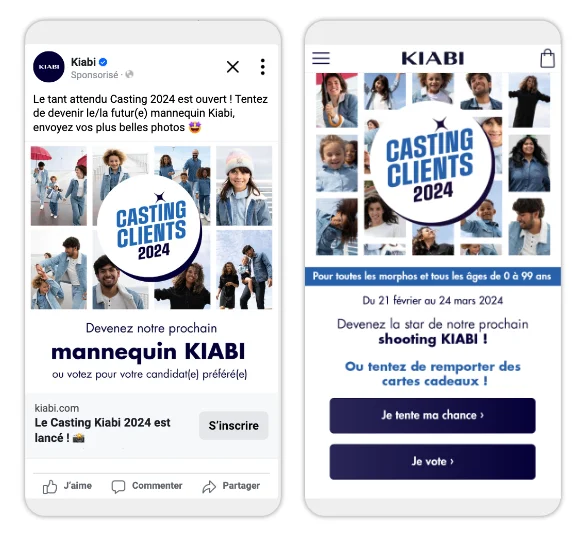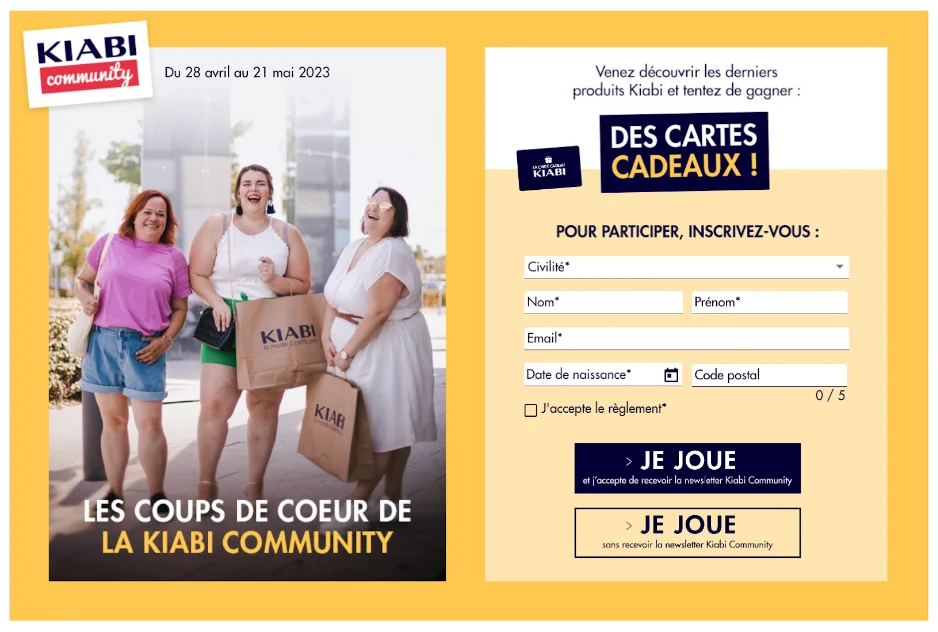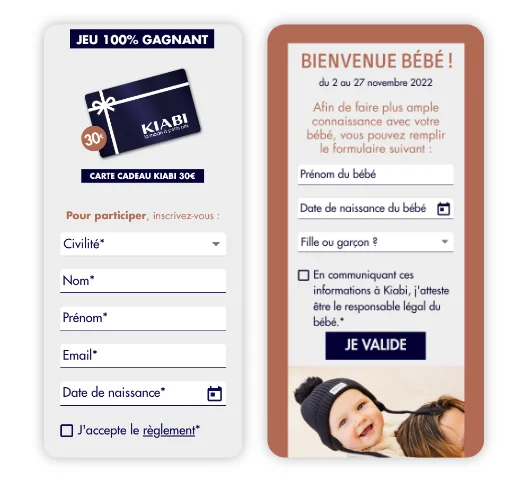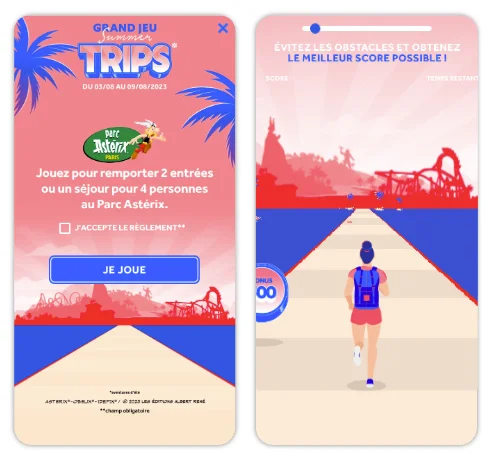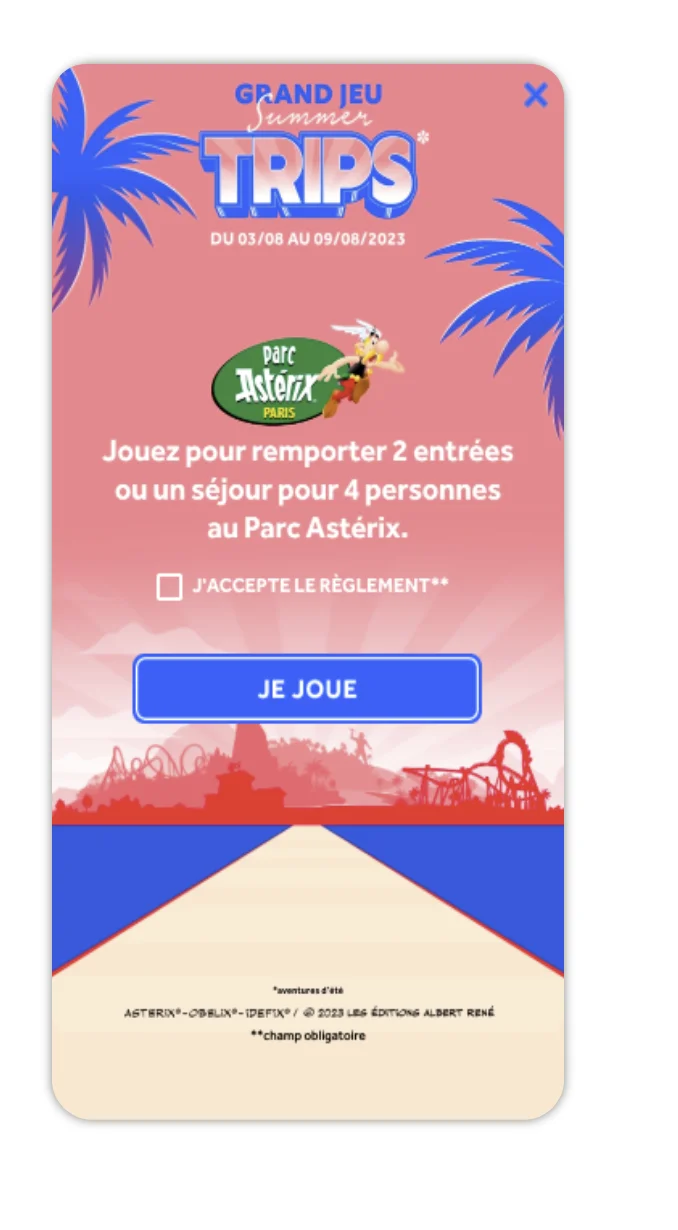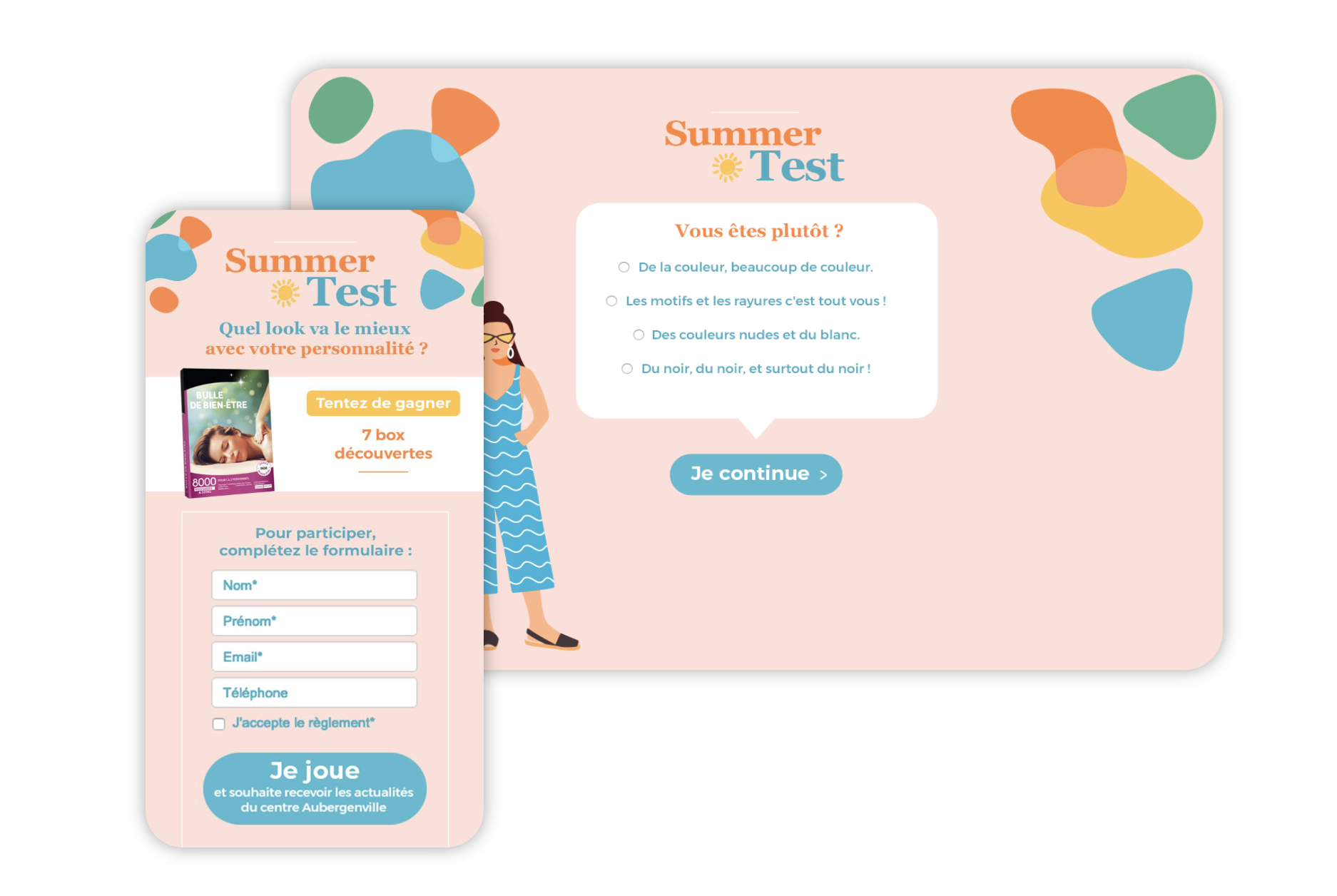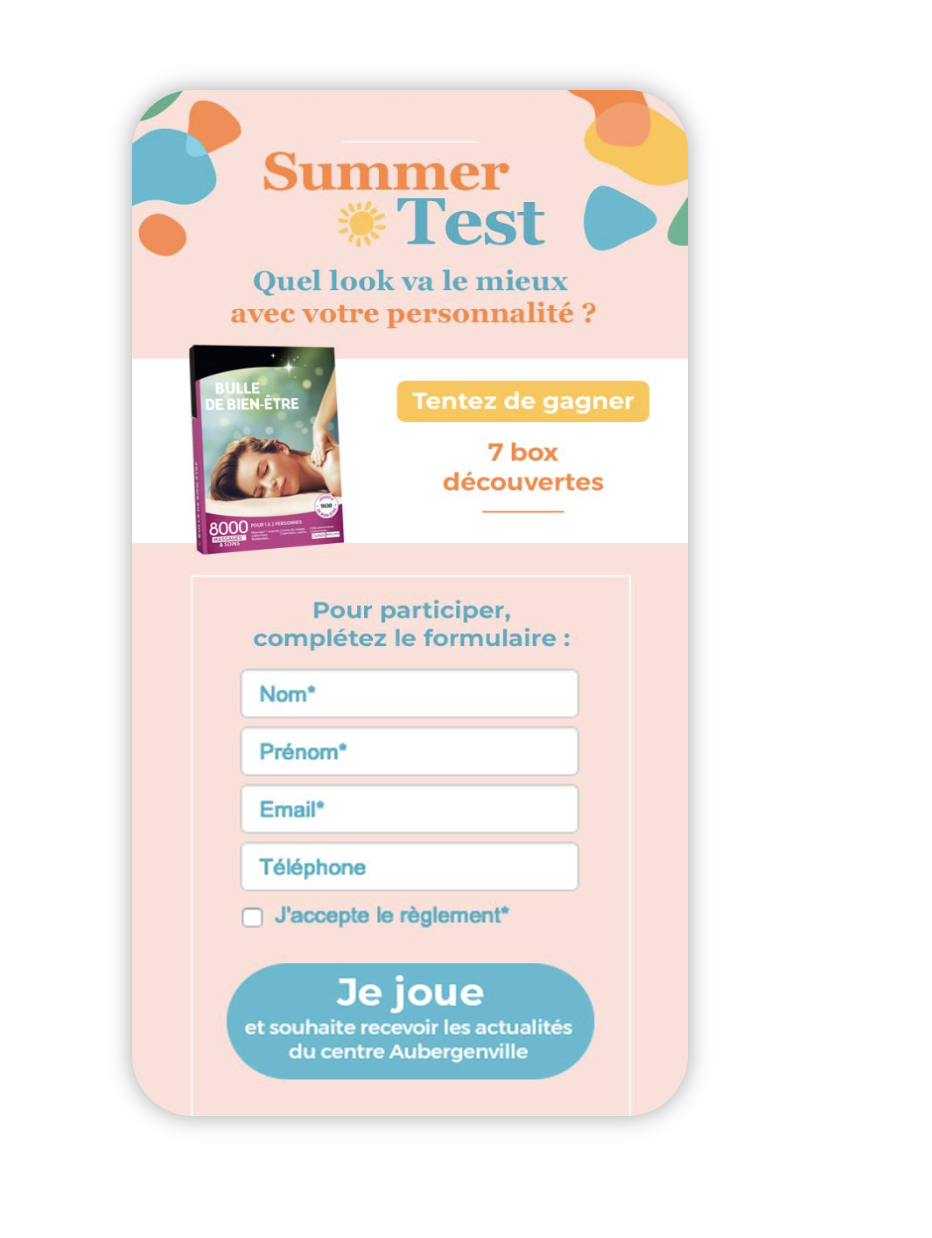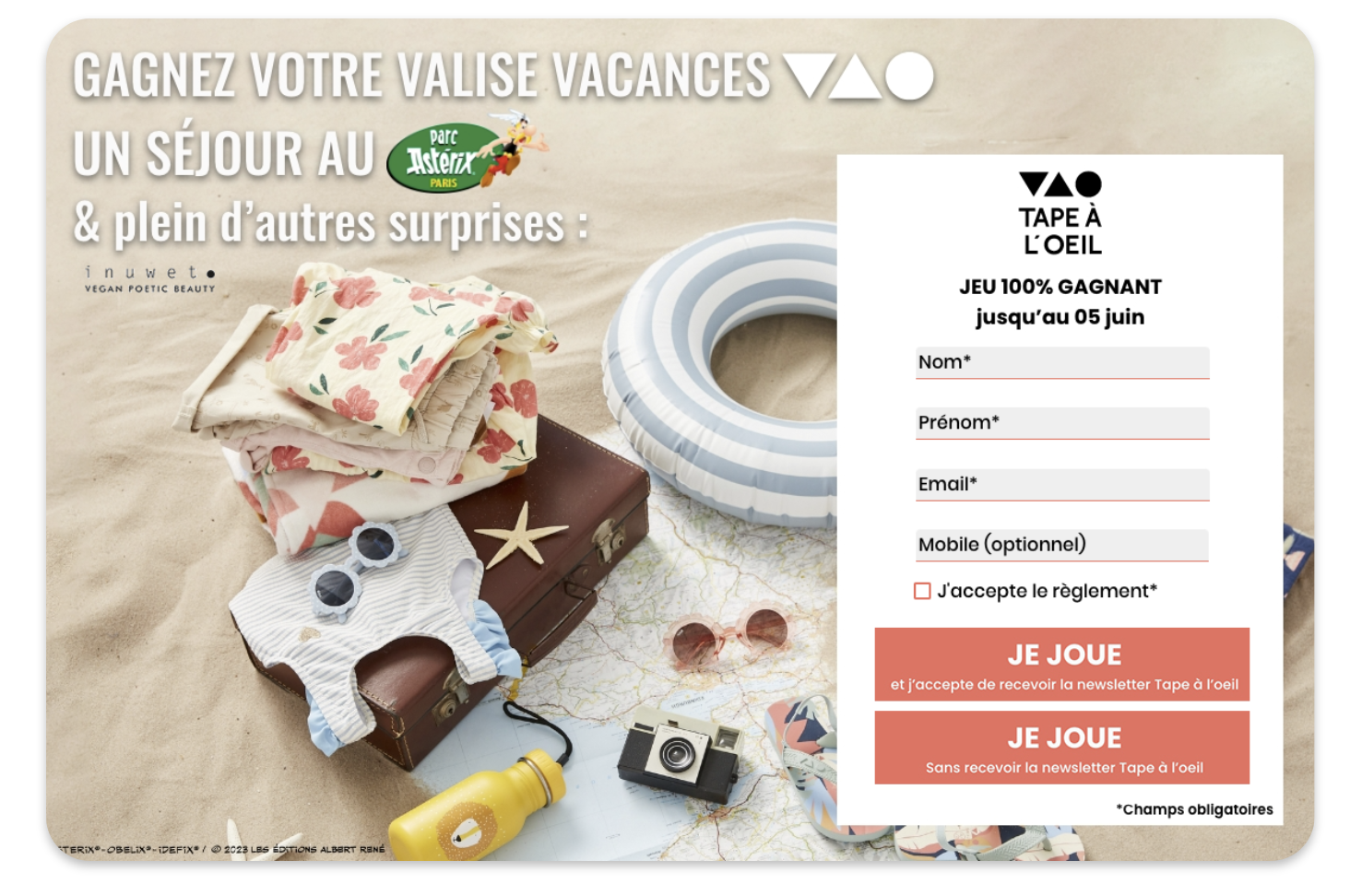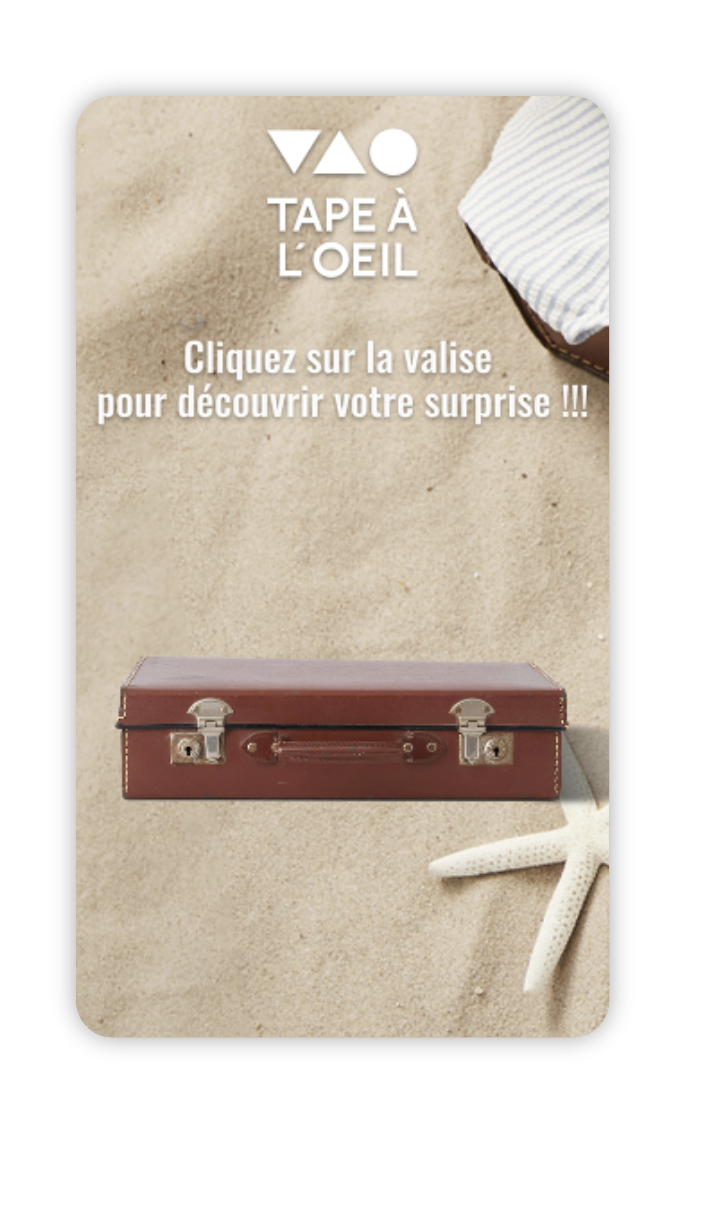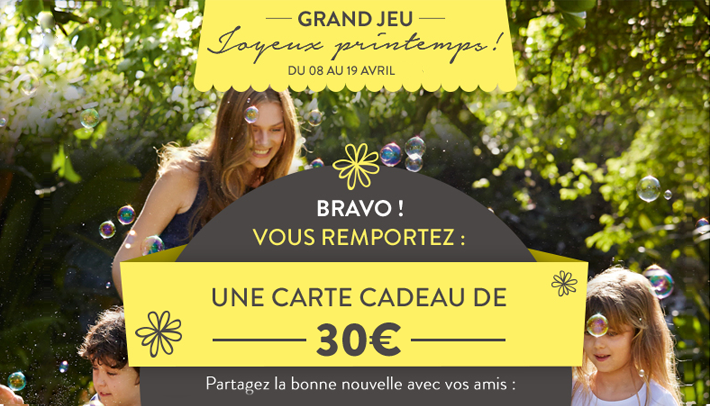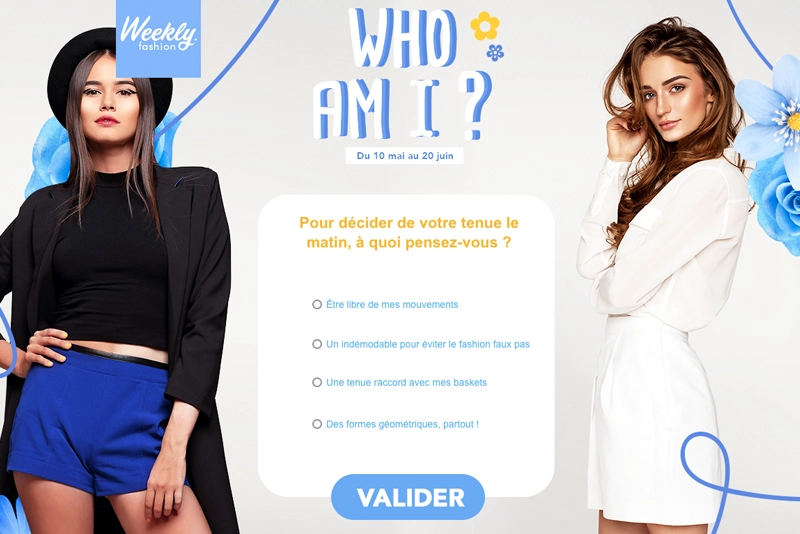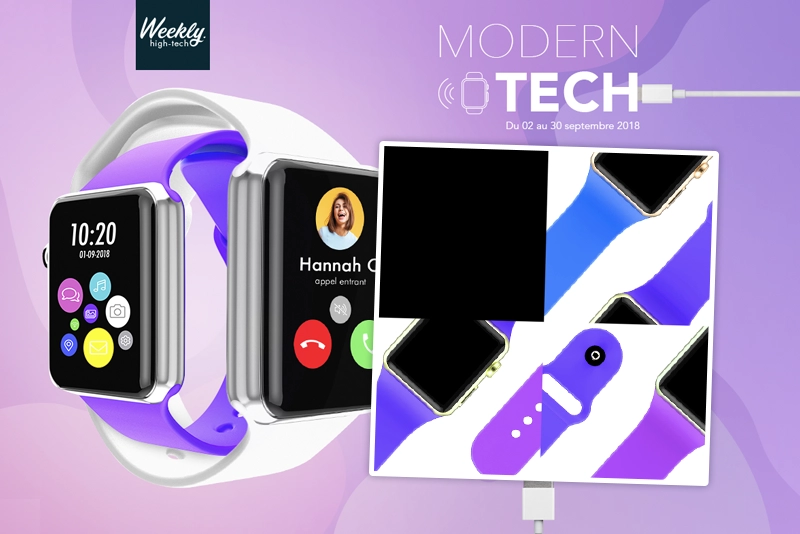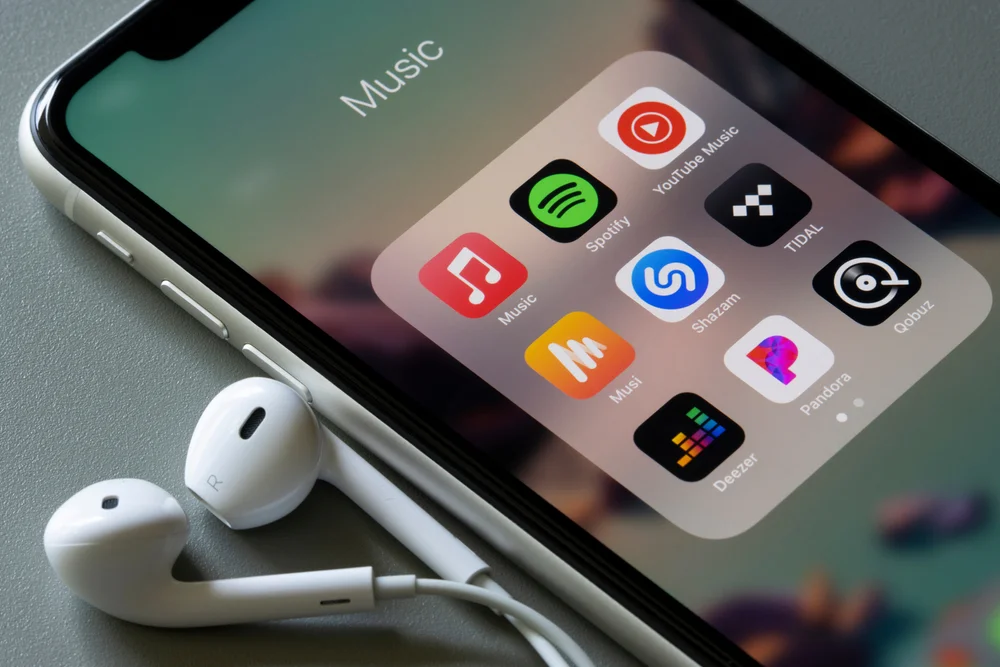
3 ideas for Christmas marketing campaigns to capture the attention of your audiences
Christmas is a magical time when the French want to please their loved ones and themselves. Consumers are therefore more inclined to interact with brand content, especially when it inspires them to buy gifts.
For companies, Christmas represents an average of 20% of sales..
Dans certains secteurs, ce chiffre peut même monter jusqu’à 35 %.
Il est donc crucial pour elles de create distinctive Christmas marketing campaigns to capture the attention of their audience and boost their end-of-year sales.
In this article, we’ll be sharing some ideas for interactive formats and games to help you achieve your objectives and energize your Christmas marketing campaign.
Anticipate the festive season to optimise your campaigns
E-commerce is booming. At Christmas time 75% of French people buy their gifts on the Internet.
The French are more inclined to spend online and, above all, to plan their purchases in advance so as to spread them over several months and take advantage of the promotional periods that precede this marketing high point (such as Black Friday or Cyber Monday, for example).
For brands, this means anticipating their marketing campaigns as far as possible Christmas. By planning events in the weeks leading up to the festive season, they can multiply the points of contact with their audiences, and the chances of them making purchases on their e-commerce site (or in-store).
The marketing highlights leading up to Christmas (Halloween, Black Friday, etc.) can also be excellent opportunities for collecting leads. and customer data. Companies will be able to activate them over the festive season by creating personalised marketing campaigns that are more effective in converting prospects into customers.
Speaking out in advance also allows you to position yourself before everyone else. Brands that start earlier can boost their visibility and reduce their media budget by communicating at a time when competition is less intense and consumers are less affected by ‘advertising fatigue’.
5 trends to boost your Christmas marketing campaign
To create an effective Christmas marketing campaign, it’s important to take account of your audience’s expectations, and market trends as a whole. Whether linked to advertising, marketing or new consumer habits, these trends will enable companies to capture the attention and better engage consumers during the festive season.
These include :
- Made in France. 1 consumer in 2 would prefer local products, Made In France, for Christmas presents. As well as highlighting the provenance of their products, brands can also capitalise on this trend to offer competition prizes that are more in line with their customers’ values;
- The end of third-party cookies and proprietary data collection. Brands need to focus on implementing zero-party data collection and opt-in tools to maintain contact with their audience and refine their customer knowledge.
- Influence marketing remains a powerful lever for engaging communities. Consumers are sensitive to partnerships between brands and content creators. These campaigns are particularly effective in collecting leads and generating new conversions.
- Short content is recommended to captivate your audience and communicate effectively. Companies need to take account of consumers’ attention spans and offer striking animations that will encourage users to stop scrolling.
- Native advertising (i.e. one that respects the format and codes of the channel on which it is broadcast) is crucial to optimising your presence on social networks and on your website. It makes for a smoother, more immersive browsing experience.
3 ideas for Christmas marketing campaigns to stand out from the crowd
By capitalising on these trends to capture consumers’ attention, brands can create effective Christmas marketing campaigns, specifically targeting their strategic objectives.
To inspire them, here are 3 ideas for animations and interactive campaigns to engage and convert your audience at Christmas.
An engaging speed game to boost brand awareness
Gamification (i.e. incorporating playful elements into sales promotions) is an excellent way for brands to capture and hold the attention of consumers. One of the most effective formats at this time of year is an engaging mechanic like Tiny Wings.
This speed game was used by household appliance brand Electrolux for its ‘A Swedish Christmas’ campaign. The campaign aimed to The main aim was to highlight the company’s Swedish origins through a fun, viral game, and thus raise its profile over the festive period.
The engaging and addictive nature of the marketing game also enabled the company to capitalise on the interaction with participants to collect opt-ins. With an engagement rate of 92% and game sessions lasting an average of 1 minute and 18 seconds, this activity helped to strengthen the brand’s appeal to consumers over the Christmas period.
SFR Réunion also relied on this mechanism for its Christmas marketing campaign. Focused on lead generation, the campaign was a great success during the recruitment phase, thanks in particular to a media strategy based on native advertising.
Thanks to an attractive prize fund, the company was able to attract more than 10k new visitors. on its website. And with an average of more than 7 games played per subscriber and an average playing time of over 3 minutes, this interactive activity generated a high level of support for the brand among participants.
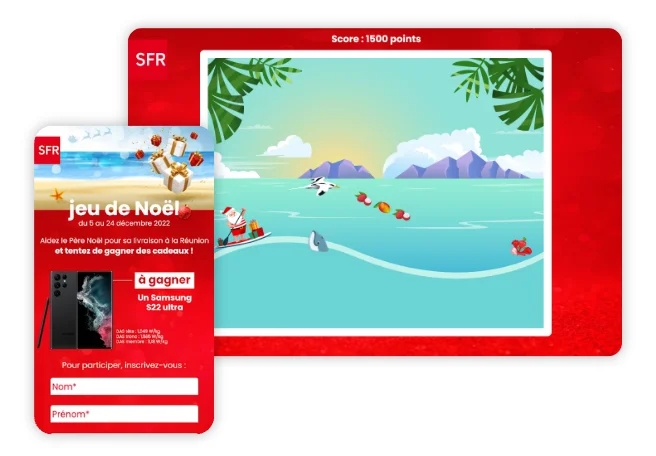
2. Instant win for Christmas coupons
Instant winners are also very effective during the Christmas period, when users are looking for good deals and discounts to save on their gift purchases.
The 100% winning Claw machine, for example, enables companies to distribute discount coupons to all participants. Showroomprivé.com banked on this Christmas marketing game during the festive season. 7,000 vouchers were distributed during the campaign, helping to convert prospects into customers and boosting the brand’s sales.
This animation can also be used as part of a Drive to Store campaign during the Christmas period. McDonald’s franchisees in the North of France have chosen to set up a campaign combining a Flappy and a 100% winning claw machine. These events enabled users to win discount vouchers to be used towards the purchase of a Maxi Best Of menu in participating restaurants, boosting traffic in the brand’s points of sale.
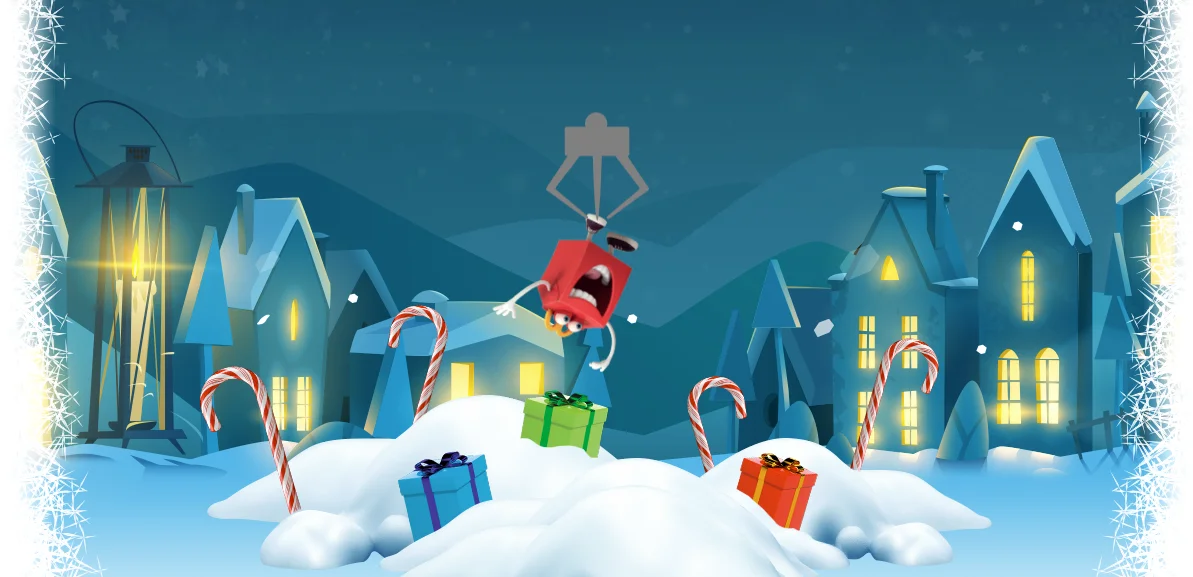
3. An omnichannel Christmas campaign to engage consumers
It takes an average of 8 interactions between a brand and its prospect before they are ready to buy. If brands want to to boost their Christmas sales, they need to multiply the points of contact and the incentives to buy with their audience.
This is what brands can do by implementing an omnichannel Christmas marketing campaign. Companies will deploy a marketing game tailored to this marketing high point (such as the Shopping List for example) across all their communication channels. Adictiz’s customisable form can be used in engaging interactive formats across 4 distinct channels: the e-commerce site, blog articles, live shopping sessions and native advertising.
Brands will be able to engage their audience across all their channels, multiplying interactions to convert as many prospects as possible and boost their Christmas sales.
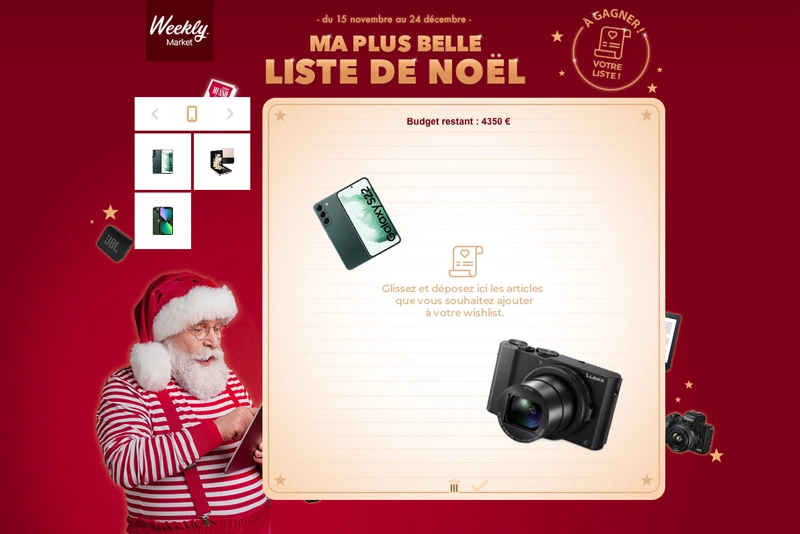
Conclusion
To create an impactful Christmas marketing campaign, your brand can rely on engaging game mechanicsthat will capture consumers’ attention. Create differentiating brand experiences to boost your brand awareness, collect leads and generate more conversions during the festive season thanks to interactive marketing activities!



